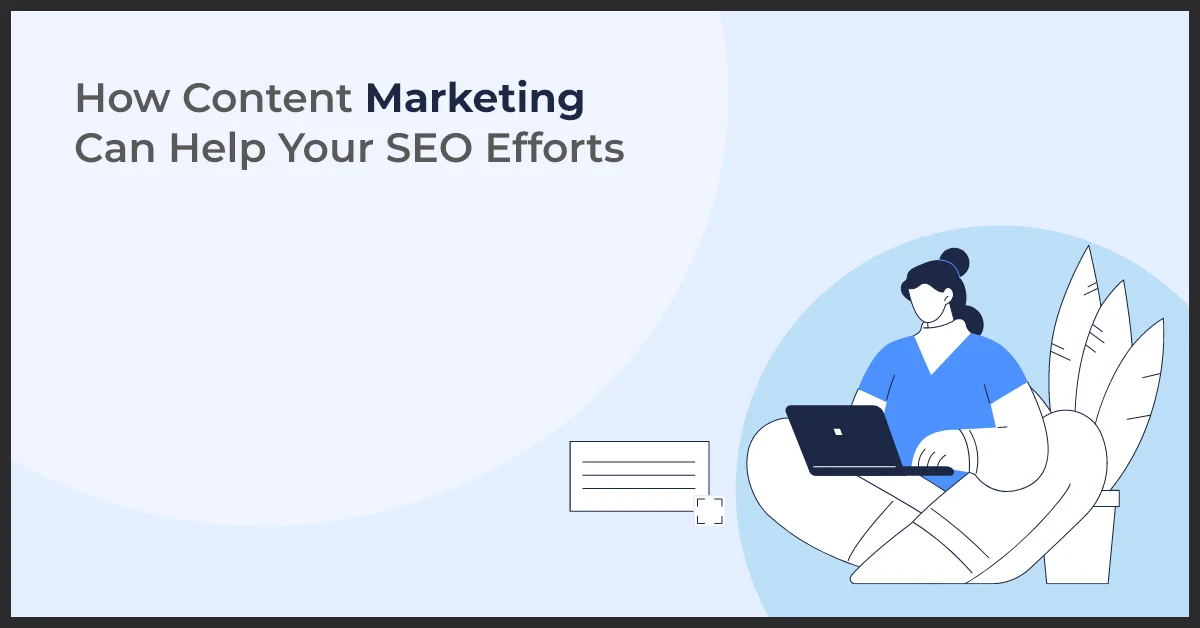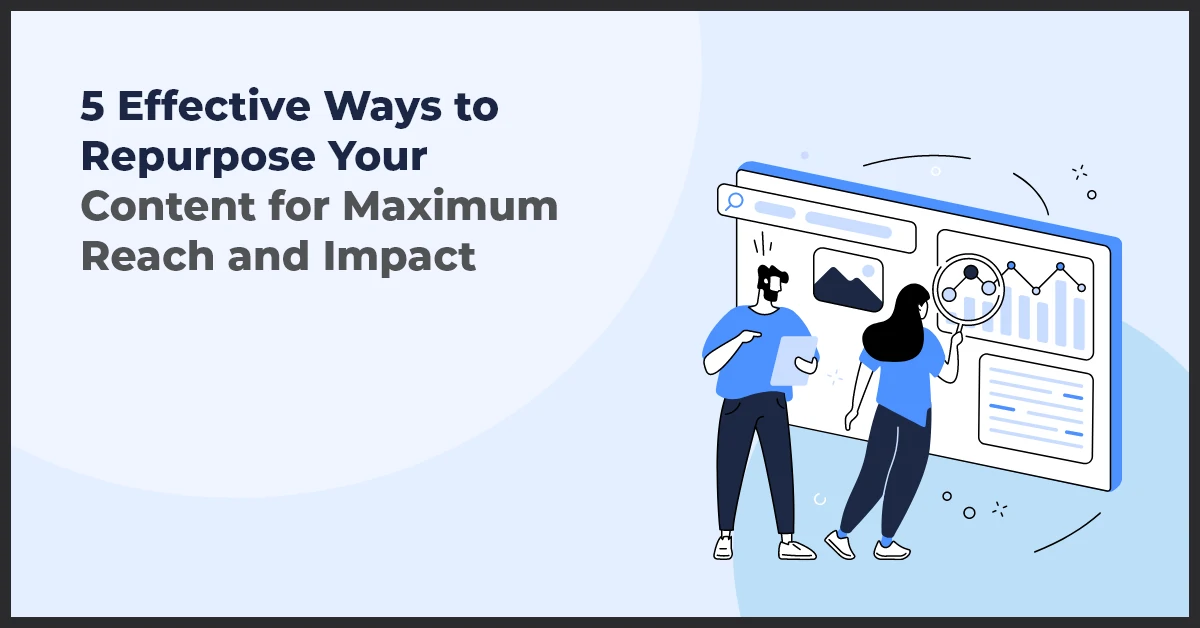How Content Marketing Can Help Your SEO Efforts

Published on: May 2, 2023
Updated on: March 17, 2025
1973 Views
- Content Marketing
7 min read
You might have created a fantastic content piece, but what is the point if it does not appear on search engines?
With 8.5 billion searches happening every day on Google, you do not want your content to get lost in the crowd.
So, it is imperative to make your content easily searchable and visible, or else you might as well have just sent it out on a message in a bottle. And that is where content marketing and SEO come together.
3 Ways How Content Marketing Supports SEO
When it comes to search engine rankings, content marketing is a powerful tool for a few reasons. Here are the top 3 ways how content marketing can support SEO.
Targeting Specific Keywords
One of the main ways content marketing can improve your search engine results page (SERP) rankings is by targeting specific keywords.
Keyword targeting is a strategy that involves researching and selecting specific keywords or phrases that your target audience is likely to use when searching for information on a particular topic. By including these keywords in your content, you can improve the chances of your content being ranked higher in the SERPs for those keywords.
The keyword research process involves identifying the most relevant and popular words or phrases people use to search for information related to your topic. Several tools like Google Keyword Planner, SEMrush, and Ahrefs can help you identify these words. These tools can provide insights into the number of searches for a particular keyword, the competition for that keyword, and related keywords you can use while crafting your content.
Once you have identified your target keywords, incorporate them into your content in various ways. It includes using the keywords in your title, headings, subheadings, meta descriptions, and throughout the body of your content. However, using the keywords naturally and meaningfully without overstuffing them in your content is crucial. This is known as keyword density and is an essential aspect of SEO best practices.
Targeting specific keywords signals to search engines that your content is relevant and useful for a particular topic. As a result, your content is more likely to appear in SERP when people search for those keywords, improving your visibility and driving more traffic to your website.
However, remember that keyword targeting is just one aspect of SEO and should be used in conjunction with other SEO strategies to achieve the best results.
Creating Fresh Quality Content
Search engines love fresh content. "Creating fresh content" refers to regularly publishing new and original content on your website, such as blog posts, articles, videos, podcasts, infographics, or any other content your target audience may find valuable or interesting.
To create fresh and valuable content, you should focus on understanding your audience's interests, pain points, and questions and create content that addresses these topics.
Search engines like Google constantly crawl the web to index and rank websites based on their content's relevance and quality. When you publish fresh content regularly, search engines take notice and index your pages more frequently, leading to higher search engine rankings over time.
But simply creating new content alone is not enough to improve your rankings. The content also needs to be high-quality and relevant. It should provide value to your readers and keep them engaged.
When your content is engaging, it increases the time the reader spends on your website and improves your website's metrics, such as bounce rate, session duration, and more. This, in return, can boost your rankings over time as long as the content is high-quality and relevant.
Building Backlinks
Backlinks are an essential off-page SEO tactic. When other websites link to your website, it tells the search engines that your site has valuable and relevant content. That is because, in general, websites only link to other sites when they find their content to be high-quality, informative, and valuable to their audience. As a result, backlinks are often seen as a vote of confidence from other websites, which can help boost your search engine rankings.
Content marketing can be an effective way to build backlinks to your website. Creating high-quality content that provides value to your target audience increases the likelihood that other websites will link to your content.
For example, if you create a comprehensive guide on a specific topic, other websites may link to your guide as a valuable resource for their readers.
Create unique, informative content that provides value to your target audience to increase your chances of earning backlinks through content marketing. Additionally, you can contact other websites in your industry and ask them to link to your content if they find it valuable.
But remember, not all backlinks are created equal. Search engines consider the quality of the website linking to your content as a factor in determining the backlink's value. For example, a backlink from a high-authority website in your industry may significantly impact your search engine rankings more than a backlink from a low-quality website.
Strategies for Content Marketing to Boost SEO
Create Content Based On Search Intent
When creating content, it is important to understand your target audience's search intent. Search intent refers to the reason behind a user's search query. Based on it, you can create content that addresses the user's needs and provides value.
To create content that addresses search intent, start with keyword research. Once you have identified relevant keywords, use them to optimize your content for search engines.
To ensure that your content addresses search intent, you should also consider the user's journey and their questions or concerns at each stage. This can help you create content that is not only relevant but also helpful and informative.
Create Long-Form Content
Long-form content, such as blog posts and articles, provide your target audience with more in-depth information. It helps establish your brand as a thought leader or expert in your industry and improves your search engine rankings.
When creating long-form content, focus on addressing your reader's needs. This can include using subheadings to break up the content and make it easier to read, providing examples and case studies, and using visuals to illustrate key points.
To create long-form content effectively, consider the structure and how you organize the content. You can create an outline or use a template to ensure your content flows logically and provides information at every step.
Add Multimedia
Incorporating multimedia into your content makes it more engaging and informative, which can improve your search engine rankings. Multimedia, such as videos, infographics, and images, keeps users on your site for longer, reduces bounce rates, and improves search engine rankings.
For example, videos can provide a more dynamic and visual way to convey information and help keep users engaged with your content. Infographics offer a more visual way to present data and information, and they help make complex information more digestible. Images help break up the text and provide visual interest, making your content more appealing and easier to read. And so on.
When incorporating multimedia into your content, consider the user's experience and the context in which the multimedia is being used. This can include ensuring that the multimedia complements the content on the page and is optimized for different devices and screen sizes.
SEO and Content: The Yin And Yang of Digital Marketing
Content marketing with SEO is like trying to make a call during a Beyoncé concert - good luck getting through. No matter how great the content is, you will not yield the desired results if it is not optimized for the search engines.
Creating high-quality, relevant content that targets specific keywords, builds backlinks and engages your audience can improve your SERPs rankings and drive more traffic to your site.
Know the latest trends and best practices to get the most out of your content marketing and SEO efforts. So, whether you are just starting with content marketing and SEO or looking to take your efforts to the next level, Growth Natives is here to help. Contact us at info@growthnatives.com or +1 855-693-4769 to seek advice and drive more growth for your business.



